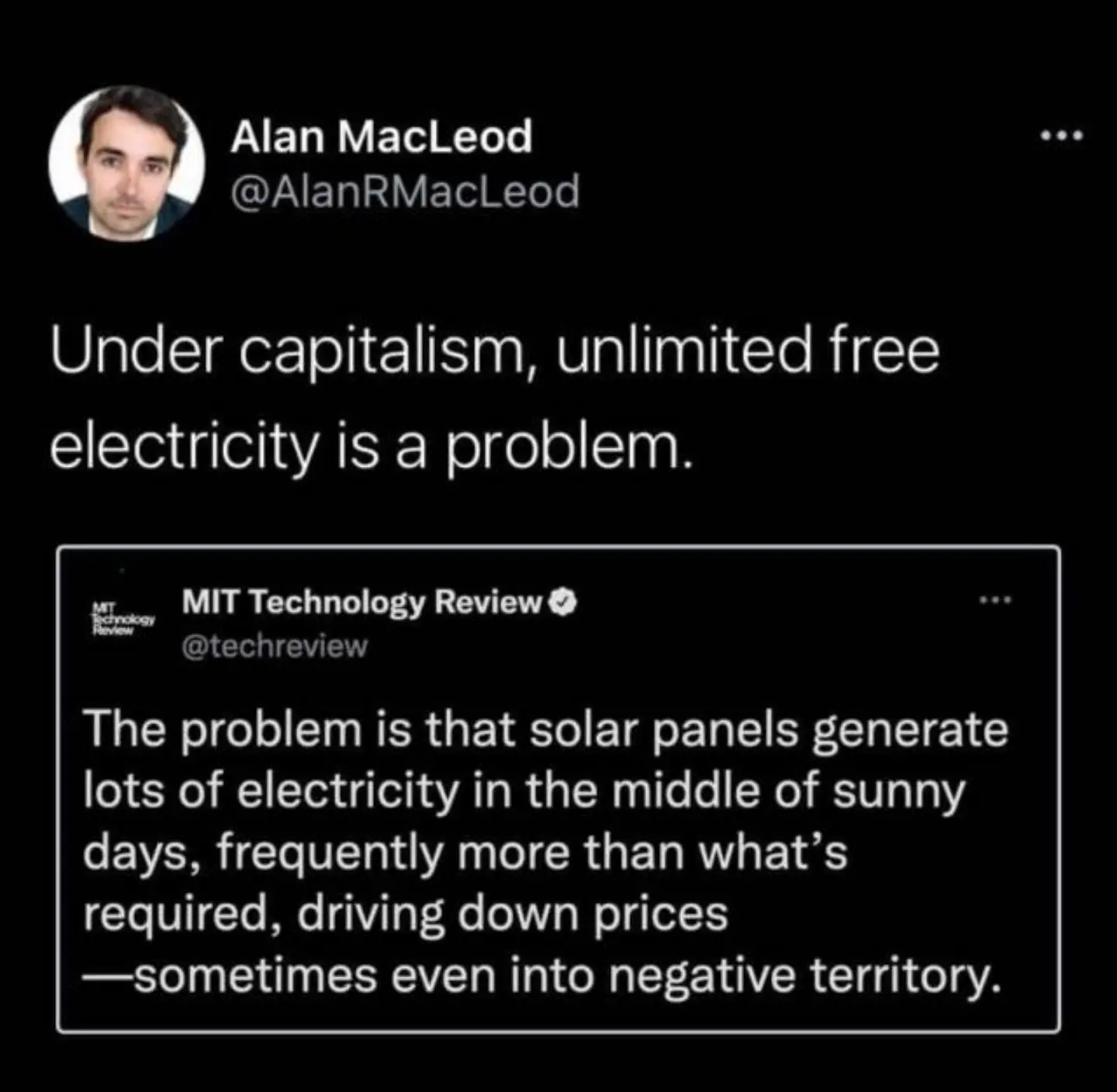this post was submitted on 10 Apr 2024
703 points (94.4% liked)
A Boring Dystopia
9748 readers
301 users here now
Pictures, Videos, Articles showing just how boring it is to live in a dystopic society, or with signs of a dystopic society.
Rules (Subject to Change)
--Be a Decent Human Being
--Posting news articles: include the source name and exact title from article in your post title
--Posts must have something to do with the topic
--Zero tolerance for Racism/Sexism/Ableism/etc.
--No NSFW content
--Abide by the rules of lemmy.world
founded 1 year ago
MODERATORS
you are viewing a single comment's thread
view the rest of the comments
view the rest of the comments

This.
For those not in the industry, the drivers for this are green tags and production tax credits (more common in wind).
Green tags are basically attaboys for funding the generation of renewable electricity, and are tradable.
Production tax credits are a $/MWH tax incentive for generating renewable power, and are, again, tradable.
In both cases, then, there are incentives for renewable projects to keep producing power even when the wholesale power price at the point of interconnection is negative, as there are generation incentives that still make it better than idling.
From an environmentalist perspective, this is fantastic, as virtually all of this renewable generation represents offset coal and gas peaker plant generation.
Aren't prices swinging rapidly between negatives and high peaks a sign of volatility, where specifically fossil gas peaker plants flourish? (Since we have a notable absence of proper grid-level storage)
For now, BESS is a hugely growing industry and many countries' planning authorities are speed lining them.
Yes, but if baseline generation goes up there are fewer peak demand events that exceed available baseline capacity so fewer revenue generating opportunities for peaker plants. But I agree the real answer is less overbuild and more storage- unfortunate given today's Tesla news.